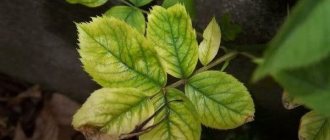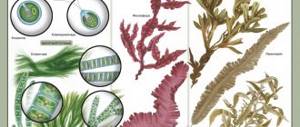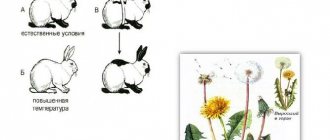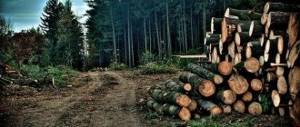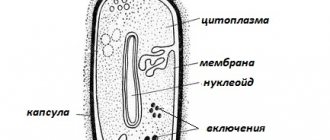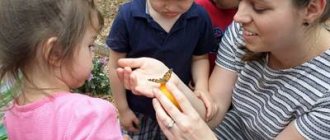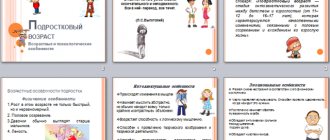Biology test for grade 6 on the topic "Photosynthesis" test in biology (grade 6) on the topic
6th grade. Topic: photosynthesis.
Option 1.
1. Photosynthesis occurs:
a) only in the light b) in the dark c) only in autumn d) only at night.
2. Complex processes occurring in green plant cells lead to the formation of:
a) sugar, which then turns into starch; b) starch, which then turns into sugar; c) starch or sugar; d) starch and sugar.
3. Carbon dioxide is necessary for the plant to:
a) respiration, b) photosynthesis, c) reproduction, d) water absorption.
4. A bleached leaf of a plant that was exposed to light when treated with iodine:
a) turns yellow b) discolors c) turns blue d) does not change color.
5. Solar energy absorbed by the plant is stored in:
a) minerals b) organic substances c) oxygen d) water.
6. The importance of plants for animals is that they:
a) emit carbon dioxide, b) absorb water and minerals
c) release oxygen, d) form humus.
7.The main product of photosynthesis is
A) Sugar b) Oxygen c) Proteins d) Salts
8. Indicate which of the following statements are correct:
A) Photosynthesis is the process of formation of organic substances from carbon dioxide and water in the light.
B) Photosynthesis occurs in the dark.
B) Photosynthesis occurs in chloroplasts.
D) An alcohol solution is used to detect starch in leaves.
E) A bleached leaf of a plant that was previously exposed to light turns blue when treated with iodine.
E) During photosynthesis, the plant releases carbon dioxide.
G) carbon dioxide is needed by the plant for photosynthesis.
Option 2.
1. Photosynthesis occurs in:
a) nucleus b) vacuoles c) cytoplasm d) chloroplasts.
2. During the process of photosynthesis, the plant:
a) absorbs carbon dioxide b) absorbs oxygen c) releases carbon dioxide d) forms minerals.
3. Photosynthesis is a process:
a) the formation of organic substances in chloroplasts in the light from carbon dioxide and water;
b) destruction of organic substances in leaves; c) formation of minerals in the light d) absorption of carbon dioxide and water by the plant
4. To detect starch in leaves use:
a) water b) iodine c) alcohol d) oxygen.
5. The “cosmic role” of green plants is that they: a) capture and store solar energy b) absorb water c) absorb mineral salts d) absorb oxygen.
6. Thanks to the evaporation of water, the plant:
a) creates organic matter b) grows c) multiplies d) cools.
7.The main product of photosynthesis is
A) Sugar b) Oxygen c) Proteins d) Salts
8. Indicate which of the following statements are correct:
A) Photosynthesis is the process of formation of organic substances from carbon dioxide and water in the light.
B) Photosynthesis occurs in the dark.
B) Photosynthesis occurs in chloroplasts.
D) An alcohol solution is used to detect starch in leaves.
E) A bleached leaf of a plant that was previously exposed to light turns blue when treated with iodine.
E) During photosynthesis, the plant releases carbon dioxide.
G) carbon dioxide is needed by the plant for photosynthesis.
Development of a lesson on the Federal State Educational Standard in the 6th grade on the topic Photosynthesis
Lesson on Federal State Educational Standards in 6th grade
Author: Akmanaeva Svetlana Vitalievna - biology teacher of the highest qualification category, MBOU Secondary school No. 45 with in-depth study of individual subjects" city of Naberezhnye Chelny, Republic of Tatarstan
Topic: Photosynthesis
Lesson objectives:
- continue to formulate the concept of plant nutrition;
- introduce students to aerial nutrition of plants;
- reveal the concept of “photosynthesis”; show that light is a necessary condition for photosynthesis to occur, reveal the role of chloroplasts and chlorophyll in the formation of organic substances;
- identify the adaptation of plants to the use of light in the process of photosynthesis;
- to form knowledge about the conditions for photosynthesis, to experimentally prove the ability of leaves to absorb carbon dioxide and release oxygen in the light.
Planned learning outcomes.
Subject:
Students should know:
- that photosynthesis is air nutrition;
- that the ability to photosynthesis is the most important property of green plants;
— conditions necessary for photosynthesis to occur;
- the result of photosynthesis is the formation of organic substances in plants;
- Oxygen is a by-product of photosynthesis
Students should be able to:
-conduct observations of green plants,
-conduct biological experiments,
-explain the results of observations and biological experiments to study the conditions for the process of photosynthesis in green plants,
- reveal the significance of the process of photosynthesis in plant life and in nature.
Metasubject:
Regulatory
—
independently discover and formulate an educational problem, determine the goal of educational activity, put forward hypotheses for solving the problem, realize the end result, choose from those proposed and independently look for means to achieve the goal, draw up (individually or in a group) a plan for solving the problem,
Working according to the plan, check your actions with the goal and, if necessary, correct mistakes yourself.
Cognitive
— explain phenomena, processes, connections and relationships identified during the study;
— establish cause-and-effect relationships;
- define concepts;
- conduct observation and experiment under the guidance of a teacher;
Communication
— formulate one’s own opinion and position, argue and coordinate it with the positions of partners in cooperation when developing a common solution in joint activities;
- work in a group - establish working relationships, collaborate effectively and promote productive cooperation; integrate into a peer group and build productive interactions with peers and adults;
— adequately use speech means to solve various communicative tasks; master oral and written language; construct a monologue contextual statement;
Personal:
— formation of environmental thinking: the ability to evaluate one’s activities and the actions of other people from the point of view of environmental conservation
— development of skills of cooperation with peers, mastering the basics of tolerant and intercultural interaction in a team;
— development of independence;
— formation of conscious motivation to complete the task;
— formation of intellectual skills (to prove, reason, analyze, compare, draw conclusions).
Basic concepts of the lesson: photosynthesis, chlorophyll, chloroplasts, organic matter.
</ Деятельность учащихся: сотрудничество с одноклассниками при обсуждении виртуального опыта, решение проблемных вопросов, работа в тетради, работа в парах при составлении схемы, работа в группах.
During the classes
I. Organizational moment
II.
Motivational - target stage
.
Music is playing .
Updating knowledge. Determining the topic of the lesson.
— Nature loves to make riddles. Here is an ordinary leaf of a plant. What's interesting about it?
For 400 years, scientists have been studying the processes occurring in it, and still not everything is clear. The leaves were called differently: “children of the sun”, conquering the sun”, “delight of the eye”. The man tried to understand why they were reaching for the sun, they were cut off, and the plant died. But the meaning of the leaf could not be revealed. Already in the 6th century in Ancient Greece, scientists tried to answer the question: how do plants eat? People saw that humans and animals subsist on the food they consume.
But what food does the plant absorb and how does it do it?
The answer was found, but it took almost 2 centuries...
- Can you answer this question now? To help you answer this question, I suggest going back 4 centuries and looking at the experiments that scientists have done to answer these questions (use presentation)
III.
Primary perception and assimilation of new theoretical educational material
Each group receives a card with material for analysis with questions.
Assignment for each group:
Having completed the tasks indicated on the card, tell the class about your findings.
1st group:
Van Helmont's experiments
More than four hundred years ago, the Belgian naturalist Jan van Helmont conducted an experiment - he placed 80 kilograms of earth in a pot and planted a willow branch in it, having previously weighed it. The plant growing in a pot was not given any food for five years, but was only watered with rainwater that did not contain mineral salts. After weighing the willow tree five years later, the scientist discovered that its weight had increased by 65 kilograms, and the weight of the soil in the pot had decreased by only 50 grams. Where the plant obtained 64 kg 950 g of nutrients for van Helmont remained a mystery.
Helmont did not know where the food for the plant comes from
. Today we will answer a question that a famous scientist could not answer at one time.
Conclusion: the scientist thought that the plant grows and develops with the help of water. The plant builds its body only with the participation of mineral salts of the soil.
2nd group
Experiments by Joseph Priestley and Ingenhausen
Conclusion: 1) leaves release oxygen;
2) it is formed only in light.
Problematic question:
— In Sweden there lived a pharmacist Karl Wilhelm Scheele. He decided to repeat the experiments
Priestley. Scheele spent them at night in a closet at the pharmacy, using the stub of a candle.
He was an excellent chemist, he carried out experiments skillfully, but he got the results
opposite to what Priestley observed. Candle under a hood with a pot of mint
extinguished, the mouse died, the mint dried up. Explain why?
3 group
Experiments of Jean Senebier
Conclusion: 1) the formation of oxygen in the leaves occurs only when carbon dioxide enters them
2) without CO2 oxygen is not formed
4 group
Experiments of Julius von Sachs
Conclusions: 1) starch is formed in cells in the light;
2) the process occurs only in the green parts of the leaf, where there are chloroplasts;
3) carbon dioxide is needed to form starch
IV. Application of theoretical principles in conditions of performing exercises
So, let's summarize the information received:
- What is the topic of today's lesson? (plant nutrition - photosynthesis)
- What process allows plants to eat? (photosynthesis)
- Under what conditions does photosynthesis occur? (CO2, water, sunlight and chloroplasts)
- What substance is formed during photosynthesis and nourishes the entire plant? (starch)
- Are organic substances formed in all leaf cells? (only those with chloroplasts)
- What is the significance of photosynthesis in nature and human life? (film "Sun, Life and Chlorophyll")
(from 2:13 min.)
Indeed, plants create organic substances for their own needs, but also
provide food to other living organisms, provide oxygen to all living things
for breathing. The vegetation cover of the earth is called the “green lungs of the planet.” Whether they will be healthy depends on you and me, on how wisely we use the wealth given to us.
Plants annually form more than 100 billion tons of organic substances and release about 145 billion tons of oxygen into the atmosphere. 80% of oxygen is released by seaweed and only 20% by land plants. Therefore, the world's oceans are sometimes called the “lungs of the planet.” The cost of oxygen for the respiration of humans, animals, and plants is compensated by photosynthesis. The oxygen content in the atmosphere is maintained within 21%.
Problematic question:
- Where and how can you increase the intensity of photosynthesis?
— In greenhouses and greenhouses, people create certain conditions - lighting, temperature, mineral nutrition of plants, carbon dioxide concentration. All these conditions increase the rate of photosynthesis.
 Why does a person create such conditions?
Why does a person create such conditions?
— For faster growth and development of plants, formation of fruits and seeds.
Conclusion: leaves are unique laboratories in which organic substances are formed in the light. Thanks to this biological phenomenon, all life on Earth exists. In today's lesson we are going to uncover the mechanisms of this biological process.
V. Explanation and understanding of homework: Assessment
Study paragraph No. 16; prepare your story about the structural features of the leaf associated with the process of photosynthesis and answer? topics in the workbook.
VI. Reflection
— Why does the yield of cucumbers in a greenhouse increase if you let them cleaned of soot into it?
factory smoke?
— The housewife at her summer cottage tore off green cabbage leaves to feed the rabbits.
Did she do the right thing? Why?
Photosynthesis occurs
in light all year round.
And he gives people food and
oxygen .
A very important process is
photosynthesis , friends.
We cannot do without it on Earth.
Fruits, vegetables, coal, hay, firewood -
Photosynthesis
is the head .
The air
clean , fresh, how easy it is to breathe !
And the ozone layer will
protect .
